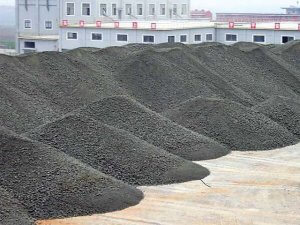From Guest Blogger Diana Smith: Sustainability Benefits of Concrete

If it wasn’t for concrete, our society would have a hard time devolving as much as it did. Just imagine if we still used wood as our main building material. Large skyscrapers would be impossible to build and houses would have a lot shorter lifespan. The combination of durability, accessibility, and sustainability has made concrete into a building block of our society.
But how much exactly is concrete durable? What are its exact benefits? Is concrete really the most sustainable building material? We will try to answer these questions and more, so that you too can realise just how important this mankind creation is.
Reason why it’s everywhere
The concrete is a core building material for a very simple reason. It is really cheap to make, compared to other building materials. Cement in concrete is mostly made from limestone, which is the most common raw mineral on earth. In addition, concrete can be also made from many different materials such as slag cement, fly ash, waste by-products from steel mills, power plants, etc. It is this flexibility and overabundance of materials that are used in concrete that keep its price lower than other construction materials.
Some characteristics
Concrete can be the cheapest material on earth, but if it didn’t offer the quality and benefits that it does, it wouldn’t be used this much.
- Durability is one of the most important characteristics of concrete. If you look around your city, you will see tall buildings, bridges, and houses that are hundreds of years old. If it wasn’t for concrete they wouldn’t be in the shape that they are now. Rust and rot, which are the most common problems in old buildings, simply can’t do a thing to a concrete structure.
- Energy-efficiency is another characteristic that puts concrete in the lead as a residential building material. Concrete has the ability to absorb and retain heat. That means that your energy bills will be lower in both summer and winter.
- The last characteristic that we would like to point out is reflectivity. Unlike asphalt, which is dark, concrete is light-coloured. This means that rooftops, streets, pavements, etc. that are created from concrete absorb less heat and reflect more solar radiation. This is instrumental in preventing heat spots in urban areas during hot summer days.
Room for improvements
One would think that concrete is a flawless material because of its wide use, but even a material like concrete has some room for improvements.
Tilt panel construction is a great example of more efficient and eco-friendly production of concrete. With a system like this, concrete is mixed on-site, with no need for transportation. Furthermore, you can create panels in any shape or size, making it easier for unique projects.
Another example is the pervious concrete. This is a special type of concrete that lets rain water seep through it. The biggest problem with the traditional concrete is that it’s waterproof, so in some situations, it can cause damage to the environment because the water is not reaching the soil. However, pervious concrete has a sponge-like nature that lets the water run straight through it, keeping the soil wet and underground water sources replenished.
And that ends our article about concrete. This material is truly one of the most important man-made creations, right up there with the wheel, electricity, and others. Throughout the years, concrete didn’t change much and that is certainly a testimony to its sustainability.
